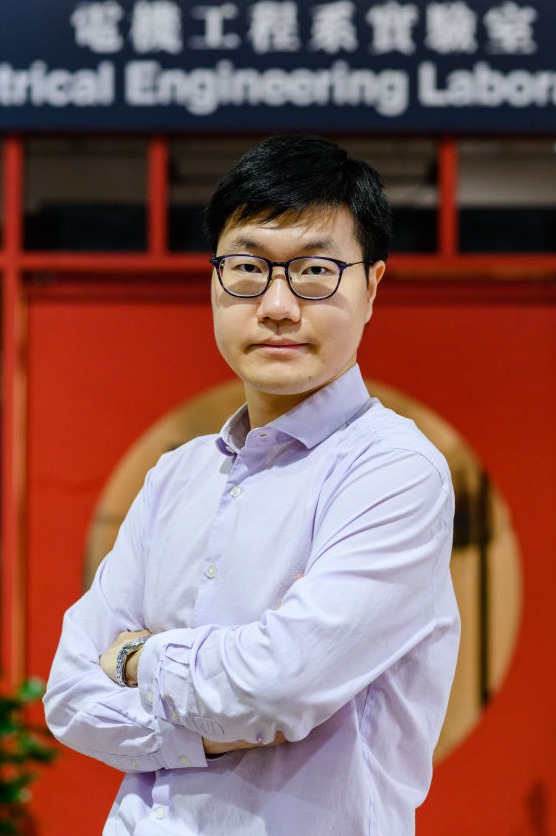Invited Speaker
Biography
Cheng Wang received his B.S. degree in Microelectronics from Tsinghua University in 2012. Afterwards, he joined Harvard University as a Ph.D. student in the School of Engineering and Applied Sciences, advised by Prof. Marko Loncar. He received his S.M. and Ph.D. degrees, both in Electrical Engineering from Harvard University, in May 2015 and May 2017, respectively. From 2017 – 2018, Cheng conducted research as a postdoctoral fellow at Harvard, before joining City University of Hong Kong as an Assistant Professor in June 2018. Dr. Wang's research focuses on the design and nanofabrication technology of integrated photonic devices and circuits. His current research effort focuses on realizing integrated lithium niobate photonic circuits for applications in optical communications, millimeter-wave/terahertz technologies, nonlinear optics, and quantum photonics. Since joining CityU, Dr. Wang has received a number of awards, including the NSFC Excellent Young Scientist Fund (HK & Macau) (2019), the Croucher Innovation Award (2020), The President's Award, CityU (2020), and 35 Innovators Under 35 (China), MIT Technology Review (2021).
Lithium niobate photonics for power-efficient optical communication systems
Cheng WANG
Keywords: Power-efficient, optical communications, photonic integrated circuits, lithium niobate
Abstract
As global IT traffic continues to grow at double-digit annual rates, the underlining hardware in contemporary optical and wireless networks is facing increasing challenges in the footprint, power consumption and cost. Photonic integrated circuits could address these challenges by simultaneously integrating many optical components on a single photonic chip. Among various photonic material platforms, lithium niobate (LN) is a particularly attractive candidate due to its strong electro-optic effect, wide transparency window and low optical loss. While LN has been widely deployed in the telecommunications industry for decades, the material has long been perceived as one that cannot be integrated due to difficulties associated with its nanofabrication. In this talk, I will first discuss our efforts in LN device fabrication techniques that have enabled thin-film LN devices and circuits that simultaneously feature sub-wavelength light confinement, low propagation loss and wafer-scale fabrication capability. Based on this platform, we have demonstrated a series of power-efficient integrated photonic components, including electro-optic modulators with CMOS-compatible drive voltages and electro-optic bandwidths covering the entire millimeter-wave band, ring-assisted Mach-Zehnder modulators with ultrahigh linearity, low-power-consumption frequency-comb generation, as well as efficient wavelength converters. The excellent device performances, together with the low optical loss and wafer-scale processes, could enable a variety of energy-efficient applications in future intra- and inter-datacenter optical links, microwave and millimeter-wave photonics, as well as analog and neuromorphic optical computation.
References
[1] C. Wang , M. Zhang*, X. Chen, M. Bertrand, A. Shams-Ansari, S. Chandrasekhar, P. Winzer, and M. Lončar “Integrated lithium niobate electro-optic modulators operating at CMOS-compatible voltages”, Nature, 562 (2018): 101-104.
[2] M. Zhang*, B. Buscaino*, C. Wang*, A. Shams-Ansari, C. Reimer, R.R. Zhu, J. M. Kahn and M. Lončar “Broadband electro-optic frequency comb generation in a lithium niobate microring resonator” Nature, 568 (2019): 373-377.
[3] M. Zhang*, C. Wang*, Y.W. Hu, A. Shams-Ansari, T.H. Ren, S.H. Fan & M. Lončar “Electronically programmable photonic molecule”, Nature Photonics, 13 (2019): 36–40.
[4] C. Wang*, M. Zhang*, M.J. Yu, R.R. Zhu, H. Hu and M. Lončar “Monolithic photonic circuits for Kerr frequency comb generation, filtering and modulation”, Nature Communications, 10 (2019): 978.
[5] Z.X. Chen, Q. Xu, K. Zhang, W.H. Wong, D.L. Zhang, E.Y.B. Pun & C. Wang, “Efficient erbium-doped thin-film lithium niobate waveguide amplifiers”, Optics Letters, 46 (2021): 1161-1164.
[6] Z.X Chen, J.W. Yang, W.H. Wong, E.Y.B. Pun, and C. Wang, “Broadband adiabatic polarization rotator-splitter based on a lithium niobate on insulator platform”. Photonics Research, 9:2319-2324, 2021.

